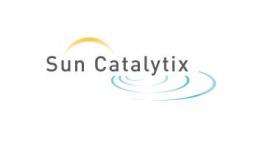March 5, 2010 weblog
Catalyst could power homes on a bottle of water, produce hydrogen on-site (w/ Video)

(PhysOrg.com) -- With one bottle of drinking water and four hours of sunlight, MIT chemist Dan Nocera claims that he can produce 30 KWh of electricity, which is enough to power an entire household in the developing world. With about three gallons of river water, he could satisfy the daily energy needs of a large American home. The key to these claims is a new, affordable catalyst that uses solar electricity to split water and generate hydrogen.
Using the electricity generated from a 30-square-meter photovoltaic array, Nocera’s cobalt-phosphate catalyst converts water and carbon dioxide into hydrogen and oxygen. The process is similar to organic photosynthesis, except that in nature, plants create energy in the form of sugars instead of hydrogen.
The hydrogen produced through artificial photosynthesis can be stored in a tank and later used to produce electricity by being recombined with oxygen in a fuel cell, even when the sun isn’t shining. Alternatively, the hydrogen can be converted into a liquid fuel.
"Almost all the solar energy is stored in water splitting," Nocera said at the first-ever ARPA-E (Advanced Research Projects Agency-Energy) conference last Tuesday. "We emulated photosynthesis for large-scale storage of solar energy."
With his start-up company, Sun Catalytix, Nocera hopes to make the system affordable enough to allow individual homes to generate their own fuel and electricity on-site. By distributing hydrogen production in this way, the new method could potentially solve the problem of hydrogen transportation.
“If I could store the sun in terms of a fuel, then at night when the sun goes down I can use the sun, effectively,” Nocera said in a company video. “What we’ve done is that we’ve made sunlight available 24 hours a day, seven days a week.”
In January, Sun Catalytix was awarded $4 million in government funding through the new ARPA-E agency. Modeled after DARPA, ARPA-E was formed to promote the development of advanced energy technologies - in this case, “direct solar fuels,” or “electrofuels.” Nocera explained that Sun Catalytix is using the financial support to take its prototype to the next level.
“Where Sun Catalytix is headed is that your house would become its own power station and gas station,” he said in the video. “All of a sudden, you don’t need any more energy from anybody else because you’re using the sun at your house.”
More information:
www.suncatalytix.com
via: Scientific American
© 2010 PhysOrg.com


















